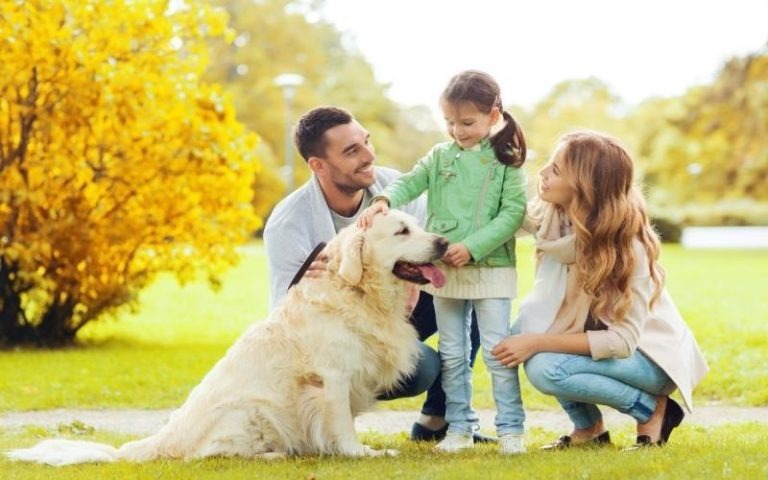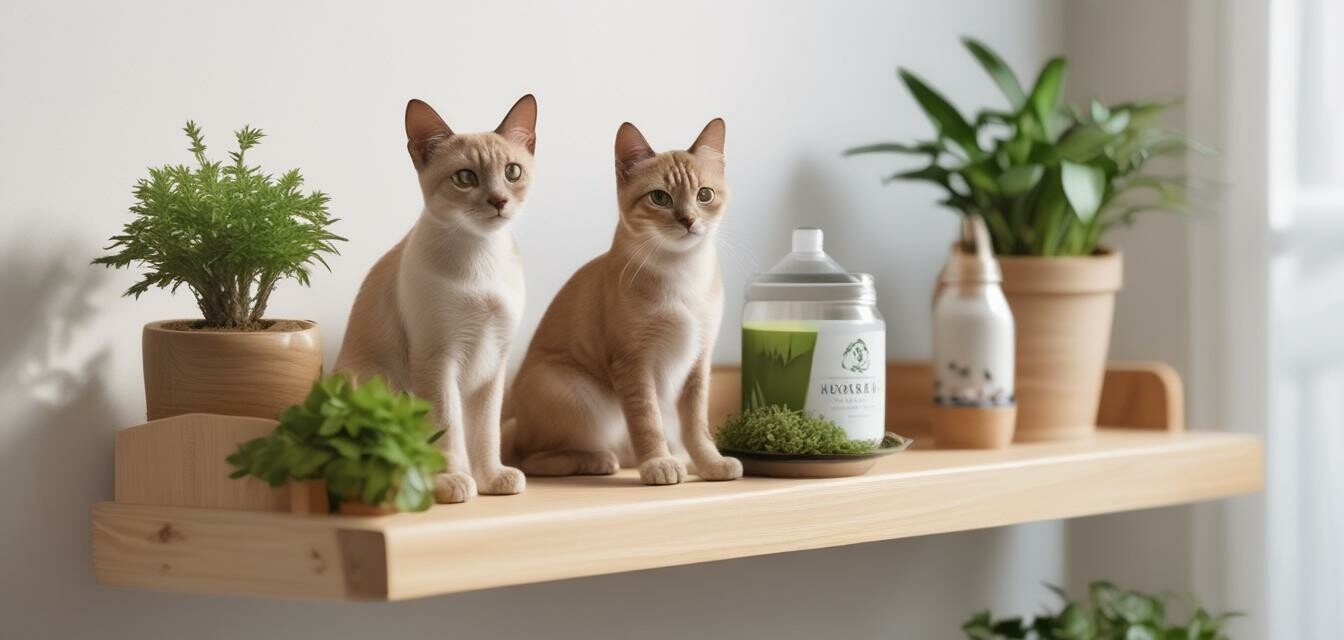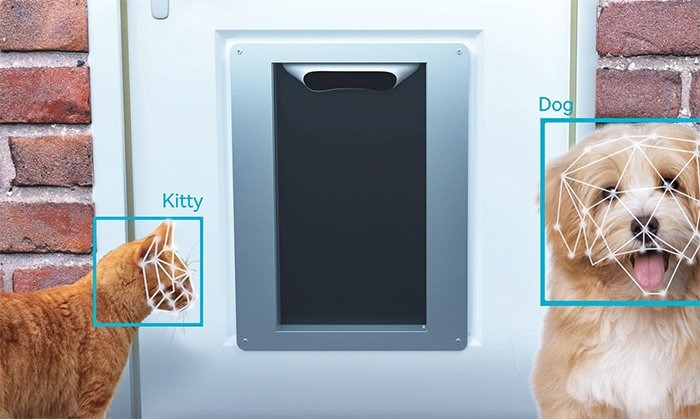
How to Set Up the Perfect Home for Your Labrador Puppy
Creating the perfect home for your Labrador puppy involves more than just love—it requires thoughtful preparation. From puppy-proofing your space and setting up a cozy bed to choosing nutritious food and fun toys, each step helps your pup feel safe and happy. Crate training, grooming, and early bonding routines support their development and ensure a smooth transition. A well-prepared environment builds trust, joy, and a lasting bond with your furry friend.
🐶 Pet Star
43 min read · 3, Jun 2025

Introduction
Bringing home a Labrador puppy is one of the most joyful experiences you’ll ever have. With their boundless energy, lovable nature, and loyal personality, Labradors make fantastic family pets. But just like welcoming a new baby, preparing your home for a Labrador puppy requires thoughtful planning.
Labrador puppies are playful, curious, and prone to chewing and mischief if left unsupervised. Creating a safe, comfortable, and engaging environment helps your new furry friend feel at home—and prevents many common puppy problems.
In this guide, we’ll walk you through everything you need to know to set up the perfect home for your Labrador puppy—from essential supplies and puppy-proofing tips to sleep areas and training zones. Setting up the perfect home for a Labrador puppy is an exciting and pivotal undertaking, far transcending the mere acquisition of a few supplies. It's a comprehensive process that involves transforming your living space into a safe, stimulating, and nurturing environment meticulously designed to cater to the unique needs of this intelligent, energetic, and famously food-motivated breed, thereby laying the crucial foundation for a well-adjusted, happy, and obedient adult dog. This preparation is not just about physical arrangements; it's about anticipating a Labrador's inherent traits – their boundless curiosity, their powerful chewing instincts, their rapid growth, and their deep desire for companionship – and proactively mitigating potential problems while maximizing opportunities for positive development. A well-prepared home minimizes stress for both puppy and owner, streamlines the integration process, and establishes clear boundaries and expectations from day one, setting the stage for a fulfilling lifelong partnership. This holistic approach encompasses critical aspects such as safety and puppy-proofing, establishing designated spaces, essential supplies, and the crucial early introduction of routine and training.
The first and most critical step in preparing for a Labrador puppy is thorough safety and puppy-proofing. Labradors, especially as puppies, are renowned for their insatiable curiosity and their tendency to explore the world with their mouths, making chew-proofing an absolute necessity. Begin by getting down to a puppy's eye level to identify potential hazards. All electrical cords must be secured, ideally hidden behind furniture, covered with cord protectors, or elevated out of reach, as chewing on live wires poses a severe electrocution risk. Toxic plants, both indoors and outdoors, must be removed or made inaccessible. A comprehensive list of common toxic houseplants (e.g., lilies, sago palms, oleander) should be consulted and acted upon. Household cleaning products, medications, human foods (especially chocolate, grapes, onions, xylitol-containing products), and small, easily swallowed objects (coins, buttons, batteries, toys with small parts) must be stored securely in high cupboards or locked cabinets. Trash cans should have secure lids to prevent scavenging. Small rugs or carpets that can be chewed or tripped on should be temporarily removed. It's advisable to restrict the puppy's access to certain areas of the house initially, using baby gates or secure doors, gradually expanding their territory as they demonstrate trustworthiness. This not only protects the puppy from harm but also prevents damage to your belongings and simplifies house-training efforts by managing their environment.
Next, establishing designated spaces is crucial for a Labrador puppy's sense of security, routine, and successful training. The most important designated space is the crate. A crate, when introduced correctly, is not a punishment tool but a safe den that caters to a dog's natural instinct to have a secure, confined space. For a Labrador, choose a crate that is large enough for the adult dog to stand up, turn around, and lie down comfortably, often with a divider to adjust the size as the puppy grows for effective house-training. Place the crate in a central, yet quiet, area of the home where the puppy can still feel part of the family but can also retreat for uninterrupted rest. It should be comfortable, with a soft bed or blanket, and never used for punishment. Alongside the crate, designate a feeding area that is quiet and away from high-traffic zones to allow the puppy to eat without interruption. Similarly, a dedicated potty spot in the yard should be chosen and consistently used for house-training. For outdoor access, ensure your yard is securely fenced to prevent escapes and protect the puppy from external dangers. Labradors are strong and agile, so a solid, tall fence (at least 5-6 feet high) with no gaps for digging under is recommended. These designated areas provide structure and predictability, which are vital for a young puppy's development.
Equipping your home with the essential supplies before the puppy arrives is paramount for a smooth transition. High-quality puppy food, appropriate for large breeds, is a must, along with sturdy food and water bowls (stainless steel is durable and easy to clean). A comfortable, appropriately sized collar or harness and a durable leash are necessary for walks and training. A variety of chew toys is absolutely critical for a Labrador puppy. Their powerful jaws and innate desire to chew require a constant supply of safe, durable chew toys made from different materials (e.g., rubber, nylon) to satisfy this natural instinct and redirect them from chewing on furniture or shoes. Puzzle toys that dispense treats can provide mental stimulation and keep them occupied. Grooming tools, such as a sturdy brush (Labradors shed!), nail clippers, and dog-specific shampoo, should also be on hand. Waste bags for walks and an enzyme cleaner for accidents are indispensable for house-training. Finally, a few basic training aids, such as high-value training treats and a clicker (if you plan to use clicker training), will set you up for success in early obedience lessons.
Beyond the physical setup and supplies, the "perfect home" for a Labrador puppy is also defined by the early introduction of routine, training, and socialization. Labradors thrive on routine and predictability; establishing a consistent schedule for feeding, potty breaks, play, and sleep from day one will significantly aid in house-training and behavior management. Positive reinforcement-based training should begin immediately upon arrival. Basic commands like "sit," "stay," "come," and leash manners are foundational and will help integrate the puppy into your household rules. Early socialization is crucial for Labradors to develop into well-adjusted adults. Once fully vaccinated, safely expose your puppy to a variety of sights, sounds, people, and other well-behaved dogs in controlled environments. This helps them become confident and less prone to fear or aggression later in life. Remember that Labradors are highly social dogs who crave companionship; ensure they receive ample attention, play, and mental stimulation daily. Neglecting their need for interaction can lead to destructive behaviors borne out of boredom or loneliness. Integrating play, training, and affection into the daily routine fosters a strong bond and reinforces their place as a cherished family member.
In conclusion, setting up the perfect home for a Labrador puppy is a deliberate and multifaceted process that extends far beyond simply bringing a new pet into your house. It involves a strategic transformation of your living environment into a safe, stimulating, and structured haven that caters specifically to the breed's unique characteristics and developmental stages. Meticulous puppy-proofing safeguards against hazards, while establishing designated safe spaces like a comfortable crate provides security and aids in training. Equipping your home with essential supplies, particularly a diverse array of durable chew toys, addresses their natural instincts. Most importantly, however, the "perfect home" is one that prioritizes consistency in routine, implements positive reinforcement training from day one, and provides ample opportunities for early socialization and meaningful interaction. By proactively addressing these critical aspects, you not only prepare your physical space but also cultivate an environment of love, trust, and clear expectations, thereby laying the robust groundwork for a lifetime of joy, companionship, and responsible Labrador ownership.
Why Preparation is Important
Before your Labrador puppy sets a paw in your house, it’s crucial to prepare for their arrival. Just like toddlers, puppies explore with their mouths, and an unprepared home can pose many dangers—from toxic plants to electrical cords.
A well-prepared home:
- Prevents accidents and injuries
- Reduces stress for both you and your puppy
- Supports faster potty training
- Encourages good behavior from the start
- Helps your pup adjust to new surroundings more easily
Puppy-Proofing Your Home
Think of your Labrador puppy as a curious toddler on four legs. They will sniff, chew, and play with everything in sight. Here’s how to create a safe environment:
1. Secure Hazardous Items
- Keep cleaning supplies, human foods, medicines, and chemicals in high cabinets or behind baby-proofed doors.
- Remove small objects like coins, rubber bands, batteries, or kids’ toys that could be swallowed.
2. Protect Cords and Wires
- Use cord covers or conceal wires behind furniture.
- Consider unplugging devices when not in use to avoid chewing hazards.
3. Remove Toxic Plants
Some common houseplants like aloe vera, philodendron, and lilies are toxic to dogs. Replace them with pet-safe options like spider plants or ferns.
4. Block Off Unsafe Areas
Use baby gates to prevent access to stairs, kitchens, or other areas that aren’t puppy-ready.
5. Secure Trash Cans
Labrador puppies have powerful noses and will dive into garbage if it smells interesting. Use bins with tight lids or keep trash cans behind closed doors.
Essential Supplies for Your Labrador Puppy
Before bringing your pup home, stock up on must-have supplies:
Bedding and Crates
- Dog Crate: Ideal for crate training and offering a secure space.
- Dog Bed: Soft and washable beds provide comfort.
Food and Water
- Stainless Steel Bowls: Durable and easy to clean.
- High-Quality Puppy Food: Designed specifically for large breed puppies like Labradors.
Grooming Tools
- Brush or Deshedding Tool: Labradors shed heavily; regular brushing is essential.
- Dog Shampoo: Use only puppy-safe, mild formulas.
- Nail Clippers: Start trimming nails early to get them used to it.
Toys
- Chew Toys: Help with teething and prevent destructive chewing.
- Interactive Toys: Like treat-dispensing balls to keep them mentally engaged.
- Soft Toys: For comfort and snuggling.
Collar, Leash, and ID Tag
- Adjustable collar with a secure buckle
- Leash (start with 4–6 feet)
- ID tag with your phone number
Cleaning Supplies
- Enzyme cleaners for accidents
- Puppy pads or newspapers for early potty training
- Lint rollers (you’ll need them with a Labrador!)
Setting Up Designated Puppy Zones
Creating structured spaces for your puppy helps with training and makes your home feel more organized.
1. Sleeping Area
Set up a calm, cozy space for your Labrador to rest. Place the dog bed or crate in a quiet part of your home, away from foot traffic but not completely isolated. Puppies sleep 18–20 hours a day, so comfort is key.
2. Feeding Station
Choose a feeding area that’s easy to clean, such as a tiled kitchen corner. Keep bowls in the same spot daily to establish routine.
3. Play Area
Use a playpen or baby gates to define a safe play zone. Fill it with chew toys, plush toys, and interactive games.
4. Potty Spot
If you're potty training indoors, use pee pads or artificial grass in one spot. If outdoors, pick a consistent area in your yard and take your pup there regularly.
5. Training Area
Use your living room or backyard for short training sessions. Labradors are smart and eager to learn, but training in a familiar area minimizes distractions.
Creating a Puppy Schedule
Routine makes your puppy feel secure and helps with training. Here’s an example daily schedule for a young Labrador:
- 7:00 AM – Potty break
- 7:15 AM – Breakfast
- 8:00 AM – Short walk/playtime
- 9:00 AM – 12:00 PM – Nap time in crate
- 12:00 PM – Potty break & lunch
- 1:00 PM – Gentle training/play
- 3:00 PM – Nap
- 5:00 PM – Potty break & dinner
- 6:00 PM – Play or walk
- 8:00 PM – Wind down/snuggles
- 9:00 PM – Last potty break
- 9:30 PM – Bedtime in crate
Labrador Puppy Training Basics
Training starts the day your puppy comes home. The earlier you begin, the better the results.
Crate Training
- Introduce the crate as a positive place with treats and toys.
- Never use the crate as punishment.
- Gradually increase time spent in the crate.
Potty Training
- Take your puppy out every 2–3 hours.
- Always reward them immediately after they go potty outside.
- Be patient—accidents are normal in the early weeks.
Basic Commands
Start teaching basic commands like:
- Sit
- Stay
- Come
- Leave it
Use treats, praise, and repetition. Keep training sessions short and fun.
Managing Labrador Energy Levels
Labrador puppies are full of energy and need daily exercise to stay happy and healthy.
Exercise Tips
- Short walks (5–10 minutes at a time for young puppies)
- Tug-of-war and fetch (indoors or in a fenced yard)
- Puzzle toys to engage their brains
- Socialization with friendly dogs and people (once vaccinated)
Avoid over-exercising young puppies, as their joints are still developing.
Socialization and Safe Exploration
Proper socialization prevents fear-based behavior later in life. Between 8 to 16 weeks, expose your puppy to:
- New sights, sounds, and surfaces
- Friendly dogs, cats, and people
- Car rides and vet visits
- Grooming tools like brushes and clippers
Always use positive reinforcement and avoid overwhelming your pup.
Puppy-Proofing Outdoor Spaces
If you have a backyard or garden, make it safe for your Labrador:
- Install a secure fence with no gaps or sharp edges
- Remove toxic plants like foxglove or sago palm
- Keep lawn treatments dog-safe
- Provide a shaded spot and clean water
- Watch for holes—they love to dig!
Common Mistakes to Avoid
Even the best pet parents make mistakes. Here are a few to steer clear of:
- Skipping training: Bad habits form quickly. Be consistent from day one.
- Not supervising: Young Labradors can get into trouble in minutes.
- Feeding wrong food: Choose large-breed puppy food to avoid growth issues.
- Neglecting mental stimulation: Bored puppies become destructive.
- Delaying vet visits: Timely vaccinations and check-ups are critical.
Conclusion
Preparing your home for a Labrador puppy is a rewarding task that sets the foundation for a happy, well-behaved dog. With the right setup—safe spaces, proper supplies, a clear routine, and lots of love—you'll make your puppy’s transition smooth and joyful.
Labradors are loving, loyal, and intelligent dogs that thrive in homes where their physical and emotional needs are met. Take the time to plan thoughtfully, and you’ll enjoy years of tail-wagging companionship.
Q&A Section
Q1: What are the basic essentials needed before bringing a Labrador puppy home?
Ans: You’ll need food and water bowls, a comfortable bed, toys, grooming tools, a crate, and high-quality puppy food. These basics ensure your puppy feels welcomed and secure.
Q2: How should the sleeping area be set up for the puppy?
Ans: Choose a quiet, cozy corner with a soft bed or crate. It should be free from drafts and noise, giving your pup a sense of safety and comfort.
Q3: What kind of food should a Labrador puppy eat?
Ans: Feed your puppy specially formulated high-quality puppy food for large breeds. Consult a vet for quantity and feeding schedules to support healthy growth.
Q4: How can I puppy-proof my home?
Ans: Keep wires, cleaning agents, and small items out of reach. Use baby gates to block off unsafe areas, and ensure your home is safe for curious paws and noses.
Q5: Why is crate training important for Labradors?
Ans: Crate training helps with housebreaking, gives your puppy a personal space, and prevents destructive behavior when you’re not around.
Q6: What toys are best for a Labrador puppy?
Ans: Labradors love chew toys, puzzle toys, and balls. Choose durable, non-toxic toys to keep them engaged and prevent chewing on furniture.
Q7: How can I make my Labrador puppy feel at home?
Ans: Spend quality time bonding, maintain a routine, and use positive reinforcement. Offering treats, love, and a consistent schedule will help them adjust faster.
Q8: Should I take my puppy outside immediately?
Ans: Avoid public areas until vaccinations are complete. Use your yard or a clean space for early potty training and supervised play.
Q9: How do I set up a feeding area?
Ans: Use non-slip bowls in a quiet corner. Keep it clean and consistent so your pup associates the spot with mealtime and feels secure.
Q10: How often should I groom and bathe my Labrador puppy?
Ans: Brush your puppy 2–3 times a week and bathe once every month or as needed. Labradors shed a lot, so regular grooming keeps them clean and comfortable.
Similar Articles
Find more relatable content in similar Articles

How Pets Strengthen Family Bonds...
Pets are more than just compan.. Read More

How Climate Change Affects Wild and Domestic Animals...
Climate change is dramatically.. Read More

Sustainable Pet Products: What to Look for in 2025...
As sustainability becomes a ce.. Read More

Smart Homes for Pets: Automated Feeders, Doors, and Mo..
As smart home technology advan.. Read More
Explore Other Categories
© 2024 Copyrights by rPets. All Rights Reserved.